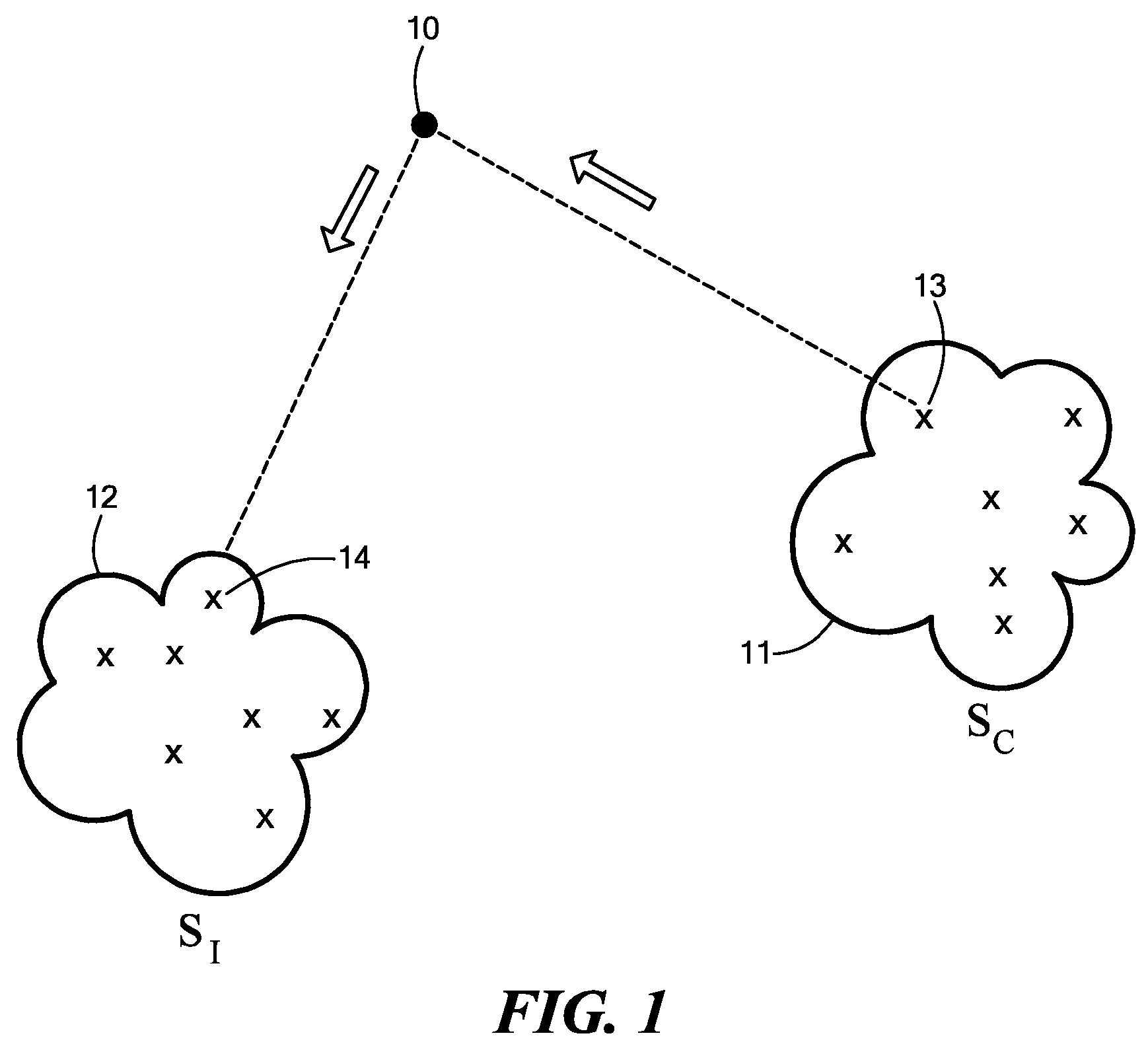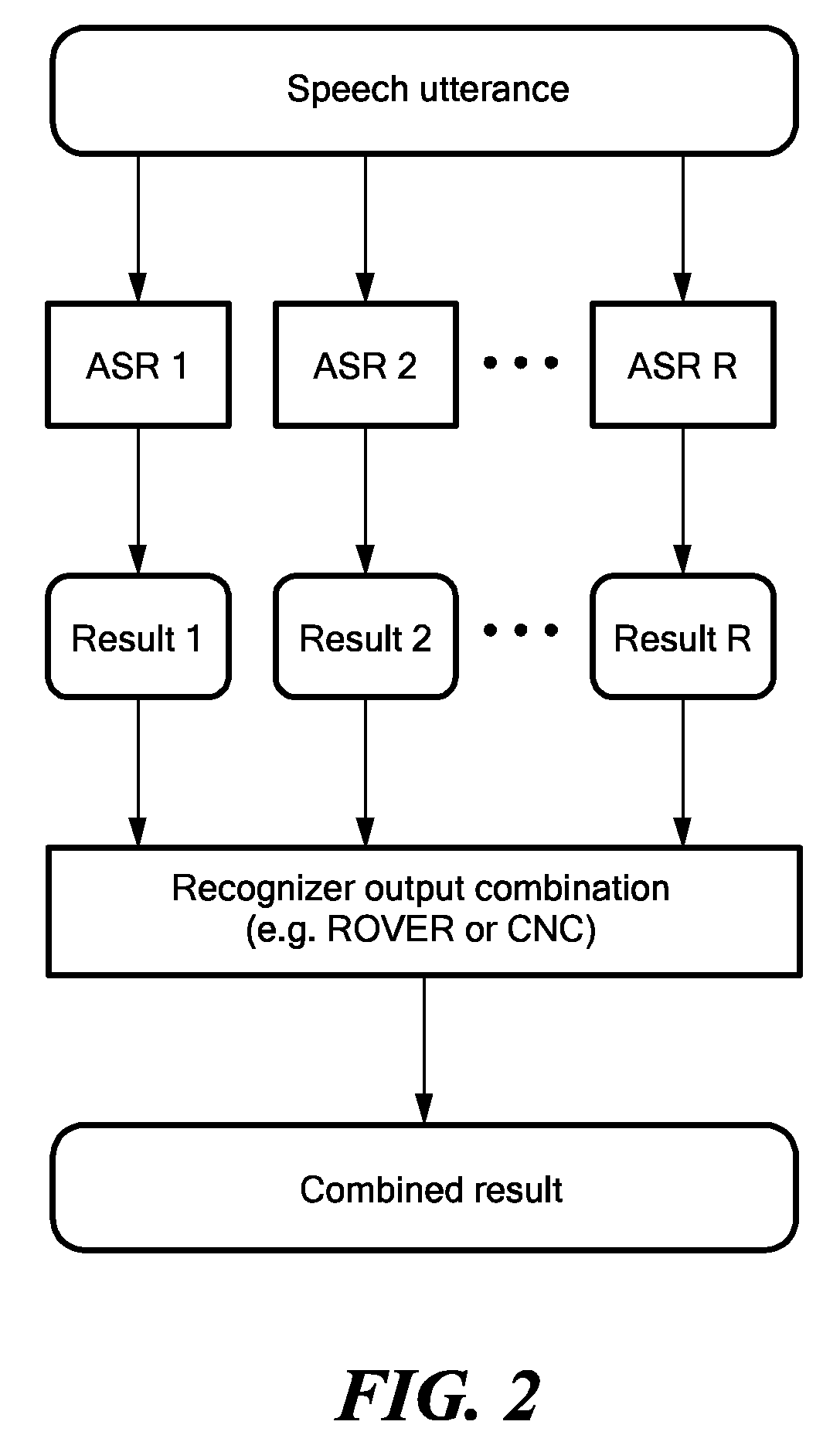Joint Discriminative Training of Multiple Speech Recognizers
a discriminative training and recognition technology, applied in the field of automatic speech recognition, can solve the problems of discriminative training, inability to produce optimal recognition performance, and design must make explicit, and achieve the effect of reducing the error rate of recognition words
- Summary
- Abstract
- Description
- Claims
- Application Information
AI Technical Summary
Benefits of technology
Problems solved by technology
Method used
Image
Examples
Embodiment Construction
[0017]Various embodiments of the present invention are directed to techniques for the direct integration of the target of joint system performance over systems having multiple independent speech recognition processes combined by approaches such as ROVER or CNC into the discriminative training objective of model parameter estimation.
[0018]Discriminative objectives usually target the optimization of a criterion in which the likelihood of the correct transcription is set into relation of the most likely incorrect recognition alternatives. The performance of a given acoustic model in combination with other reference acoustic models (e.g., by ROVER or CNC) can be directly targeted by augmenting the criterion with the score accumulated over those reference models.
[0019]For example, the criterion of Minimum Classification Error (MCE) training (a common discriminative training objective) can be formulated as
λMCE=argmaxλ∑u∈Uf(log(P(Wu)pλ(Xu|Wu))-log(∑someW≠WuP(W)pλ(Xu|W)))(1)
where U represen...
PUM
 Login to View More
Login to View More Abstract
Description
Claims
Application Information
 Login to View More
Login to View More - R&D
- Intellectual Property
- Life Sciences
- Materials
- Tech Scout
- Unparalleled Data Quality
- Higher Quality Content
- 60% Fewer Hallucinations
Browse by: Latest US Patents, China's latest patents, Technical Efficacy Thesaurus, Application Domain, Technology Topic, Popular Technical Reports.
© 2025 PatSnap. All rights reserved.Legal|Privacy policy|Modern Slavery Act Transparency Statement|Sitemap|About US| Contact US: help@patsnap.com



